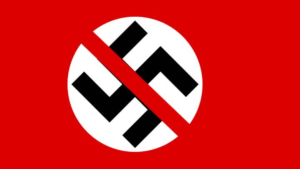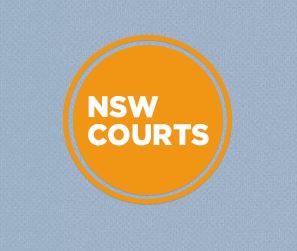By Paul Gregoire and Ugur Nedim
The NSW government last Thursday banned the public display of Nazi symbols, including the Hakenkreuz, the Third Reich’s corruption of the ancient swastika, making this state the second jurisdiction nationally to prohibit the insignia associated with antisemitism, racism and genocide.
Introduced in late June, the Crimes Amendment (Prohibition on Display of Nazi Symbols) Bill 2022 creates the new offence of displaying Nazi symbols, with provisions that acknowledge the religious use of the swastika, as well as recognises instances when exhibiting the images may be warranted.
The move follows the passing of similar laws in Victoria on the same day the NSW legislation was tabled. And these moves have been triggered by mounting evidence that neo-Nazi and far-right extremist activity are on the rise in Australia.
“The events that occurred under the Nazi regime represent one of the darkest periods of recorded human history,” Liberal MP Gabrielle Upton outlined in her second reading speech on bill.
“The atrocities committed during that period are almost unimaginable, and the intergenerational trauma they have caused continues to be felt by many people today.”
The Liberal Nationals bill was based on a similar piece of legislation introduced by Labor in October last year, which led to a committee review determining that parliament should consider such laws with some minor amendments to the original draft proposals.

A public prohibition
The legislation inserts 93ZA into the Crimes Act 1900 (NSW) to create the offence of knowingly displaying Nazi symbols in public without a reasonable excuse. The penalties that apply are 12 months imprisonment and/or a fine of $11,000, while a corporation can be fined $55,000.
The second part of the section goes on to ensure that those displaying the swastika in connection with the Buddhist, Hindu and Jain faiths are not breaking the law for doing so.
The horizontal swastika has been a symbol of peace within eastern traditions going back tens of thousands of years. The Nazis turned the sign on its side to form the Hakenkreuz, the Nazi hooked cross, which has become associated with hatred.
The new law further recognises that there are situations where an individual may have a reasonable excuse to display Nazi insignia in “good faith”, which can entail “academic, artistic, or educational” purposes or “for another purpose in the public interest”.
The new offence follows section 93Z in the Crimes Act, which is a law that acts in a similar manner to prevent “publicly threatening or inciting violence on grounds of race, religion, sexual orientation, gender identity or intersex or HIV/AIDS status”.
What is a ‘public act’?
The new law is limited to displays which amount to a ‘public act’ and does not extend to private settings.
Under the law, a public act is defined as:
- any form of communication (including speaking, writing, displaying notices, playing of recorded material, broadcasting and communicating through social media and other electronic methods) to the public,
- any conduct (including actions and gestures and the wearing or display of clothing, signs, flags, emblems and insignia) observable by the public, or
- the distribution or dissemination of any matter to the public.
A suburban threat
On introducing the Labor bill into state parliament last year, then NSW shadow counterterrorism minister Walt Secord explained that the rise in “conspiracy theories and… neoNazi activity spurred on by social media, especially during COVID” has seen an increase in the display of Nazi symbols.
The now former Labor shadow counterterrorism minister added that between June 2018 and April 2020, there were 31 reported incidents where Nazi symbols were publicly displayed in NSW, while over October 2019 and September last year, 331 antisemitic incidents had been logged nationwide.
In October 2020, ASIO boss Mike Burgess explained that 30 to 40 percent of his agency’s workload now consists of monitoring far-right extremism, while last October, the AFP’s Joint Terrorism Team stated that its white supremacist caseload had risen by 750 percent over the 18 months prior.
Then NSW police commissioner Mick Fuller told an estimates hearing last September that far-right extremism has been on the rise over the past five years, that this had escalated over the pandemic period, and he estimated it was taking up 20 percent of his force’s counterterrorism effort.
In the public interest
The NSW Legislative Council released its review report on Secord’s bill in February, with NSW attorney general Mark Speakman responding the following month that his government had committed to introducing a new bill to criminalise the public display of Nazi symbols.
In a statement in relation to its bill, the NSW government noted the inquiry had identified three public interest reasons in relation to why such a prohibition is warranted.
The first is to protect the community from hateful conduct. Submissions outlined that the display of Nazi insignia causes “profound offence and distress” not only to the Jewish community, but also to others targeted by the Third Reich, such as LGBTIQ people and people with disabilities.
The prohibition also aims to send a message of denunciation to those who do support the sentiment being conveyed by the display of such symbolism, as it trivialises the murder of six million Jewish people in WWII, along with it having the ability to incite violence in the present.
The final highlighted reason is that the ban on Nazi symbols is in support of strengthening multiculturalism and respecting diversity in the community. The statement further posits that the display of the insignia is incompatible with modern Australian community values.
A clear message
The Andrews government passed its ban on Nazi symbols in public in Victoria on 21 June. Far-right activity in that state has long been pronounced, with photographs emerging from the Grampians in January 2021, which showed a group of National Socialist Network members giving the Nazi salute.
Just a fortnight ago, Melbourne’s Irish Times Pub terminated two employees after one of them spat in a customer’s beer as he was displaying a black sun tattoo prominently on his shoulder, which is another symbol the Nazi regime used.
On introducing the NSW legislation, Upton pointed out that it doesn’t define the term “Nazi symbol”, as it’s understood that the law captures the broad range of emblems, tokens and signs that the Nazis utilised.
“The bill is a clear, intentional statement from the government on behalf of the community that the display of Nazi symbols, and the hatred and bigotry they invoke and inspire, has absolutely no place in our society in NSW,” the Liberal MP said in conclusion. “Their display will simply not be tolerated.”











